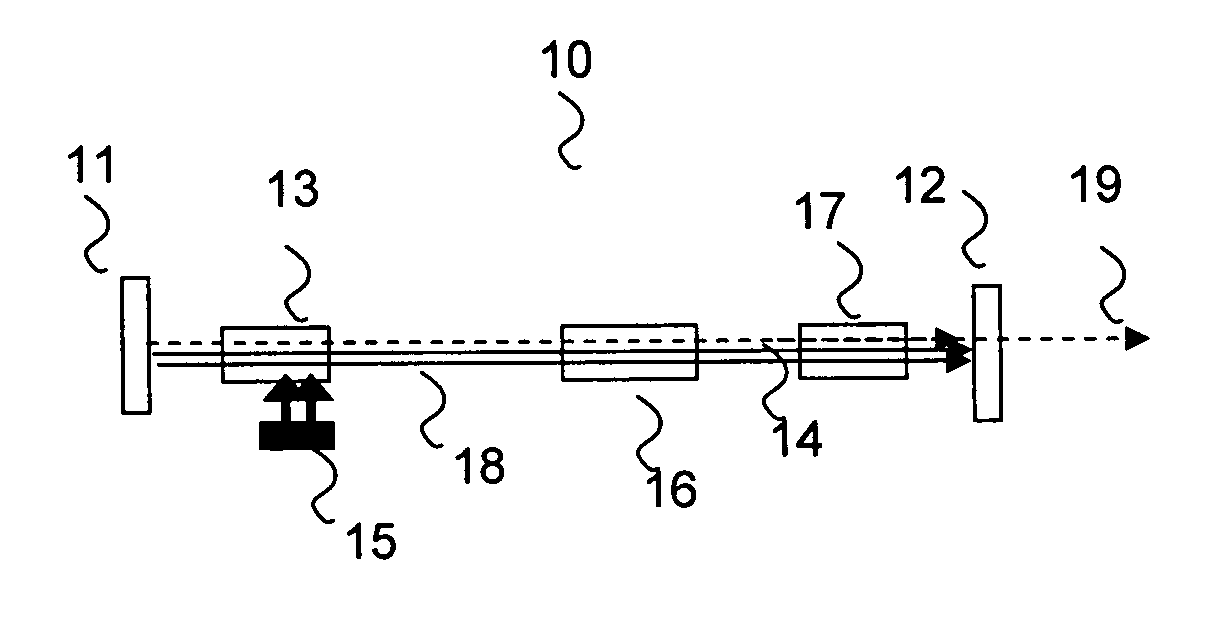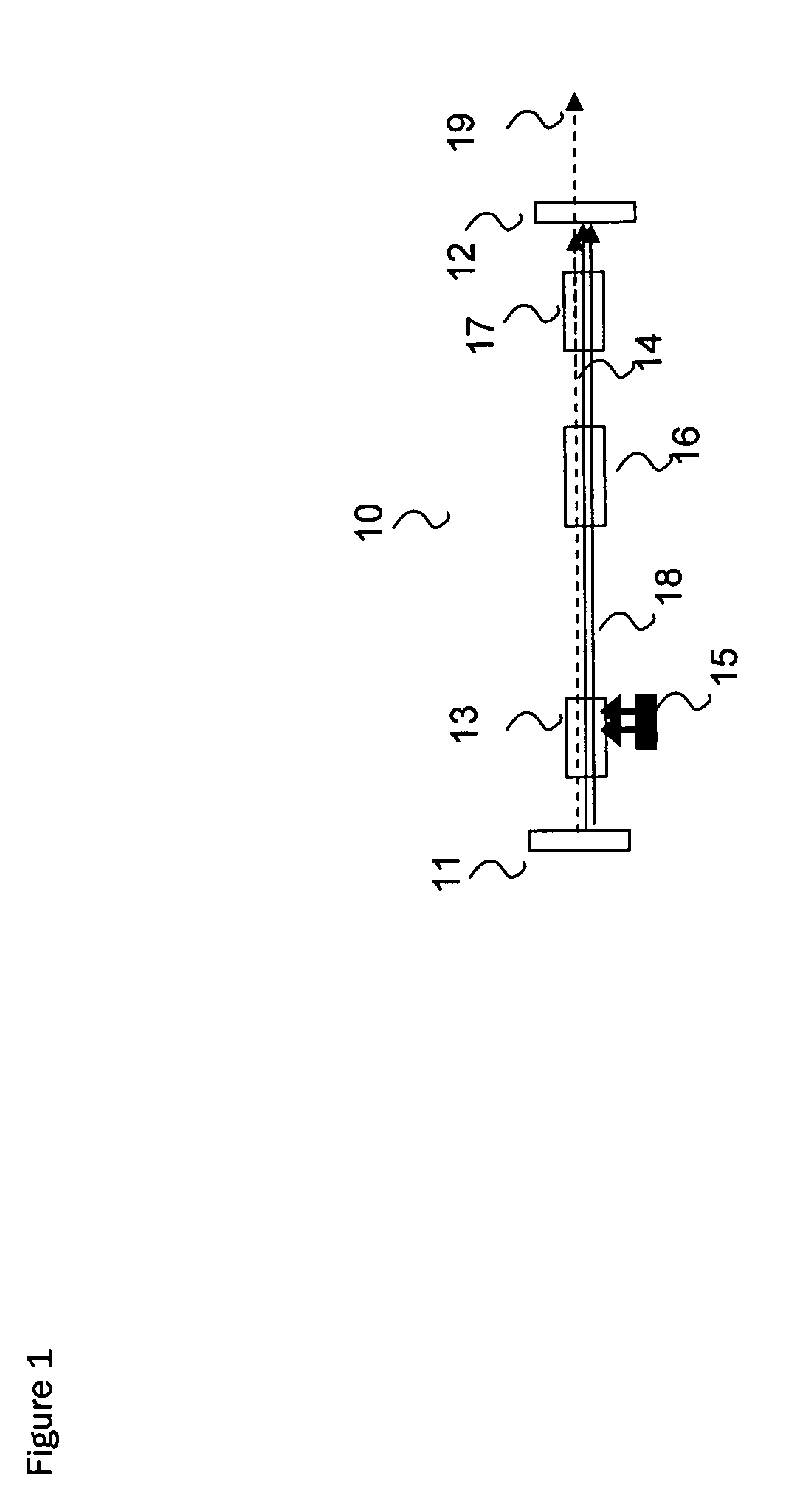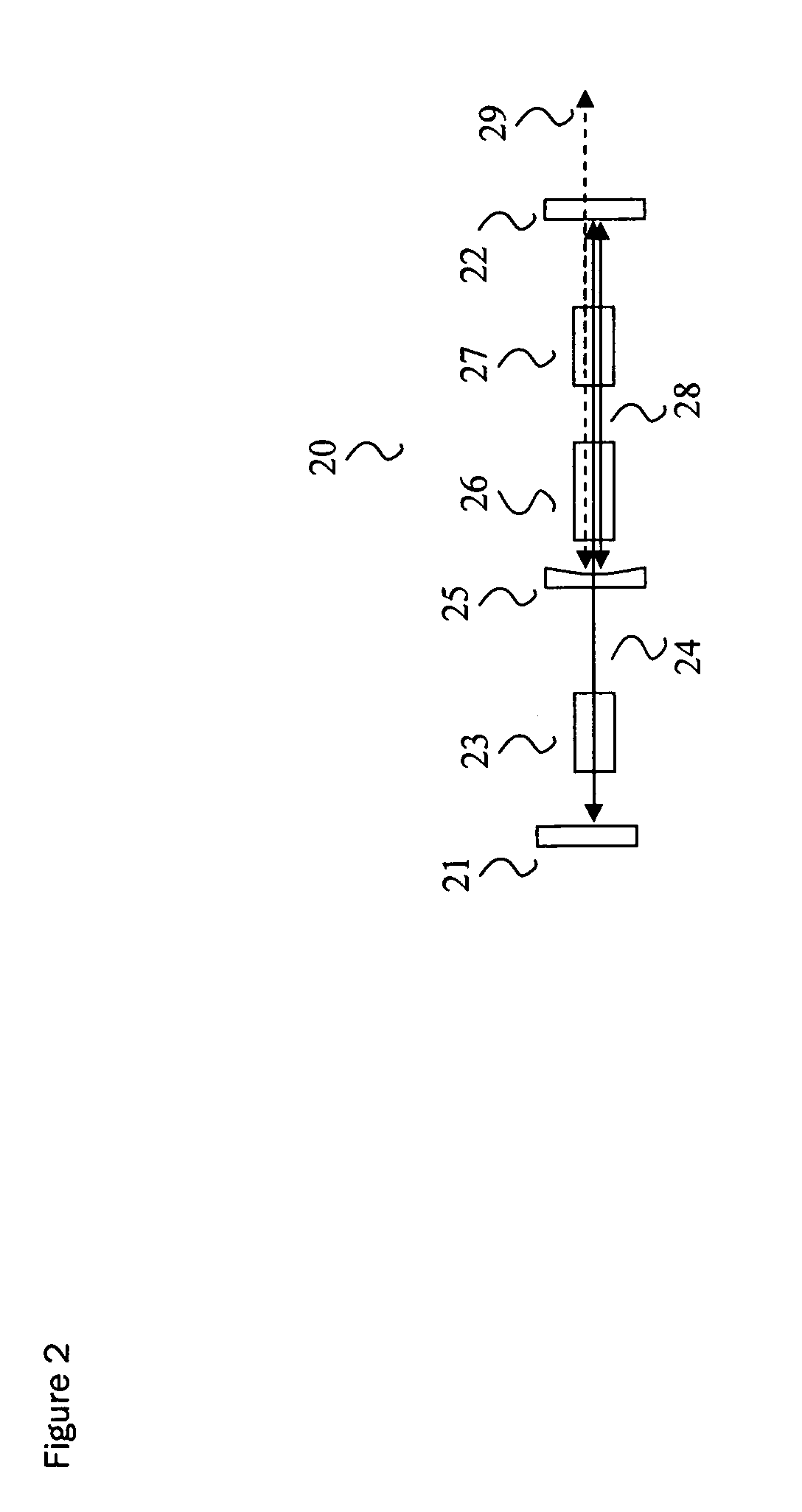Generation of frequency-pre-selectable radiation by using more than one cascaded frequency conversion processes of resonantly enhanced beams
- Summary
- Abstract
- Description
- Claims
- Application Information
AI Technical Summary
Benefits of technology
Problems solved by technology
Method used
Image
Examples
Embodiment Construction
[0034]As illustrated in FIG. 1, in one of the embodiments of the present invention, a plural intracavity resonantly enhanced nonlinear frequency conversion laser system, generally denotes as 10, includes a fundamental frequency laser gain medium 13 surrounded by, at least, two cavity mirrors 11 and 12 to form a resonant cavity. Energy of the gain medium is supplied by an energy source 15. The gain medium 13 absorbs energy from an energy source, such as, diode laser radiation, electric energy, or thermal or mechanical kinetic energy. In various embodiments, the fundamental frequency gain medium can be any kind of solid state, liquid, gas, or plasma, such as, argon-ion gas, helium-neon gas, Nd:YAG / YLF / YAP / YVO4 / LuV O4 / GdVO4, Ti:S, Li:SAF, Yb-doped YAG / YLF / YAP / YVO4 / GdVO4 / KGW / KYW, electrically-pumped or optically pumped semiconductor, quantum-well materials, etc. The fundamental beam 14 is resonant enhanced oscillation radiation by the cavity mirror 11 and 12 around gain 13 once they are...
PUM
 Login to View More
Login to View More Abstract
Description
Claims
Application Information
 Login to View More
Login to View More - R&D
- Intellectual Property
- Life Sciences
- Materials
- Tech Scout
- Unparalleled Data Quality
- Higher Quality Content
- 60% Fewer Hallucinations
Browse by: Latest US Patents, China's latest patents, Technical Efficacy Thesaurus, Application Domain, Technology Topic, Popular Technical Reports.
© 2025 PatSnap. All rights reserved.Legal|Privacy policy|Modern Slavery Act Transparency Statement|Sitemap|About US| Contact US: help@patsnap.com



